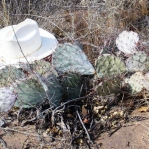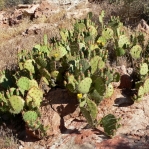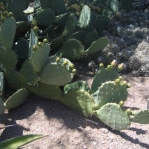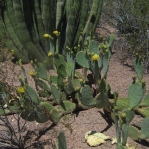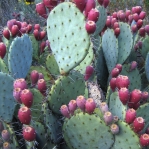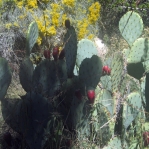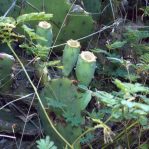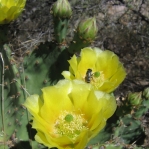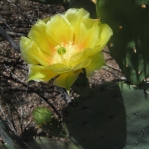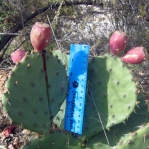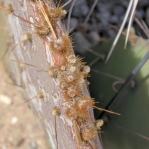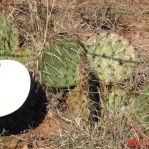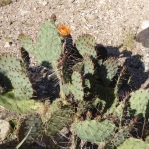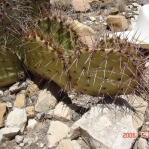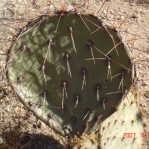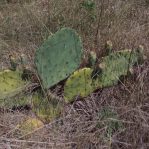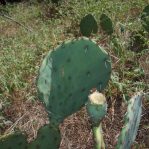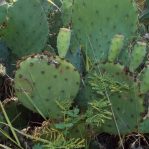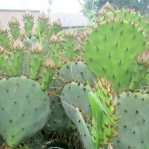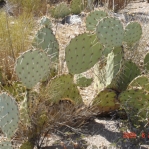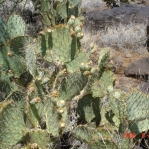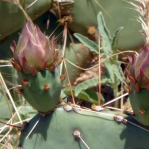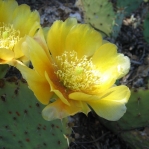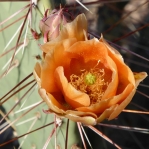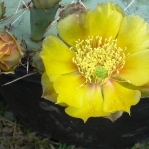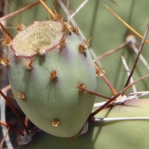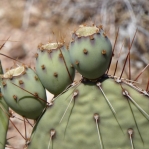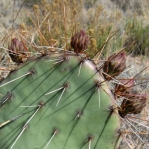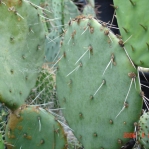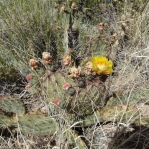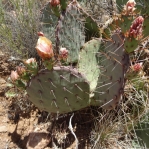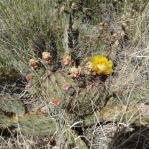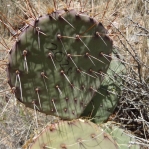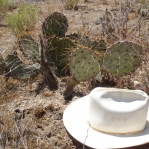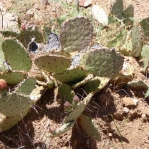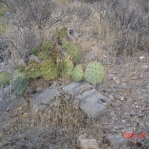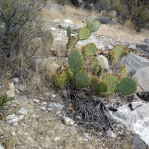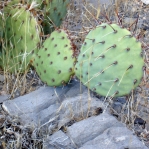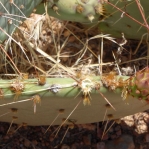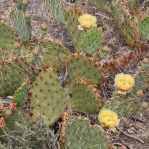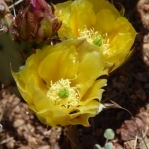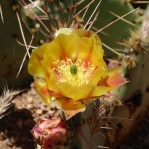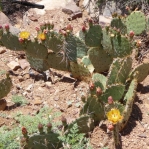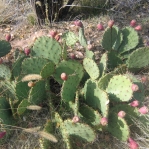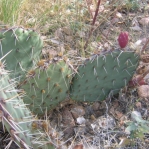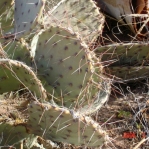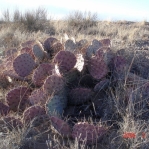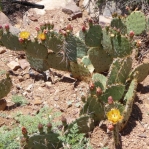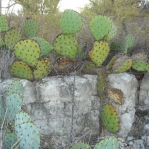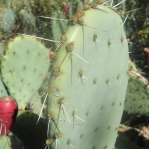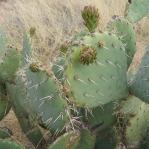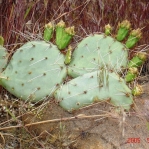
Griffiths, Annual Report of the Missouri Botanical Garden 20: 87, 1909
Holotype (as O. gilvescens); Herbarium; Herbarium; Herbarium; Herbarium; Herbarium; Herbarium; Herbarium; Herbarium; Herbarium; Herbarium; Herbarium; Herbarium; Herbarium; Herbarium; Herbarium; Herbarium. Except where indicated, all specimens were originally interpreted as O. phaeacantha.
O. gilvescens is related to O. camanchica
O. gilvescens is related to O. phaeacantha
Original Description
What is Opuntia gilvescens?
Opuntia gilvescens is a widespread, medium-sized cactus. It occurs from Oklahoma all the way to southern Nevada and desert California in the mountains. It is a common plant in Arizona. It is often confused with O. phaeacantha, perhaps because there is no slot for it in most guidebooks.
Details
O. gilvescens has subcircular or obovate cladodes that are generally dull. Main branches rest upon the ground and other branches rise to 30-40(50) cm. Mature plants may be 1 m across. Cladodes may be 20 × 25 cm, but they may sometimes be smaller. Often there are 2 major spines that point downward. However, there may be 1-4 on first-year growth. The tips of the spines are translucent. In age, glochids eventually form a concentric circle around the areole increasing in length to 8-10 mm.
Many O. gilvescens flowers have a blush of red or firm red at the bases of the interior tepals, but some individuals may have rust-colored veining that can darken or spread as the flower ages. Cacti with all-yellow flowers may be found. Also, some cacti have pink flowers as in parts of southern Utah. Stigmas are green, pale green, or yellow-green. Anthers are yellow or cream-colored. Filaments are yellow but can darken towards the base. Fruits may be barrell-shaped, but often have a narrow base, ripening reddish. Flesh is greenish or pink-green, sometimes dark. Seeds are about 0.75 cm across with a 1 mm rim. Seeds have a prominent notched hilum.
O. gilvescens is hexaploid.
Other Notes
The authors have found this prickly pear in Oklahoma (Arbuckle Mountains and west), in western and central Texas, in many parts of New Mexico as well as in Arizona, southern portions of Nevada, Utah, and Colorado, and in the mountains of the eastern California Mojave Desert. Similar-appearing prickly pears have been found in the mountains west of Palm Springs, California. Additionally, the plant occurs in the Chihuahuan Desert of Mexico.
Plants from southwest New Mexico and adjacent Arizona are often pale; sometimes they have rhombic or more elongate pads and pale spines. Plants from the Mojave Desert area often have round pads with fewer than average areoles and a few pale spines. Plants from the Chihuahuan Desert of Mexico and into central Texas are often dark in appearance; they may become strongly red-purple in winter and the spines can be black.
In central New Mexico, O. gilvescens fits the type description well. Some southern populations, such as populations on the east side of the Sandia Mountains and down into Socorro County, and again in the Alamogordo area, often have wide, curved pads creating an interesting potato chip look.

